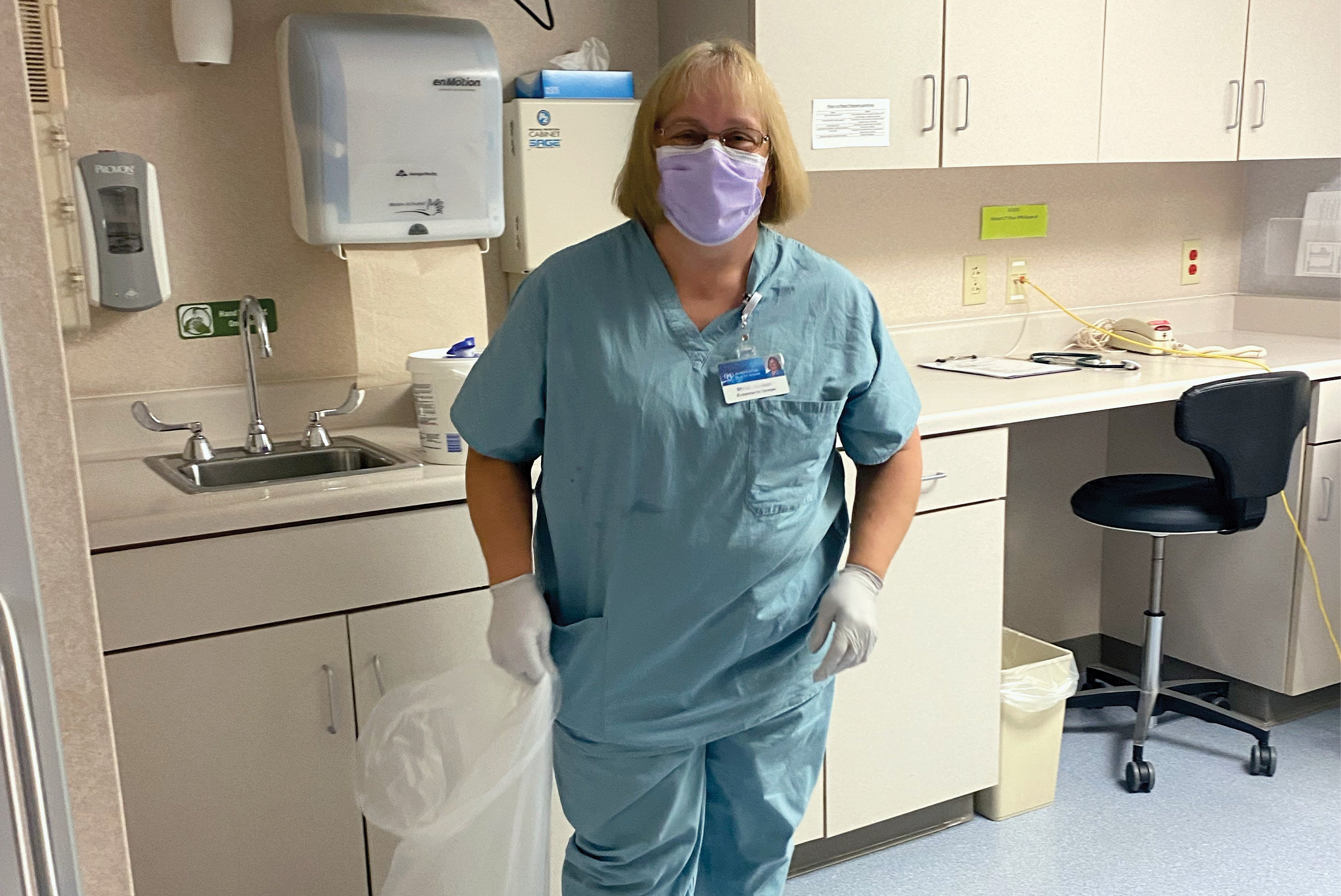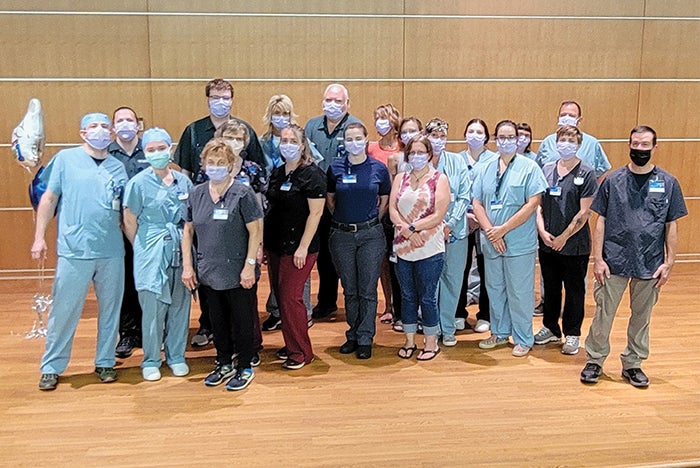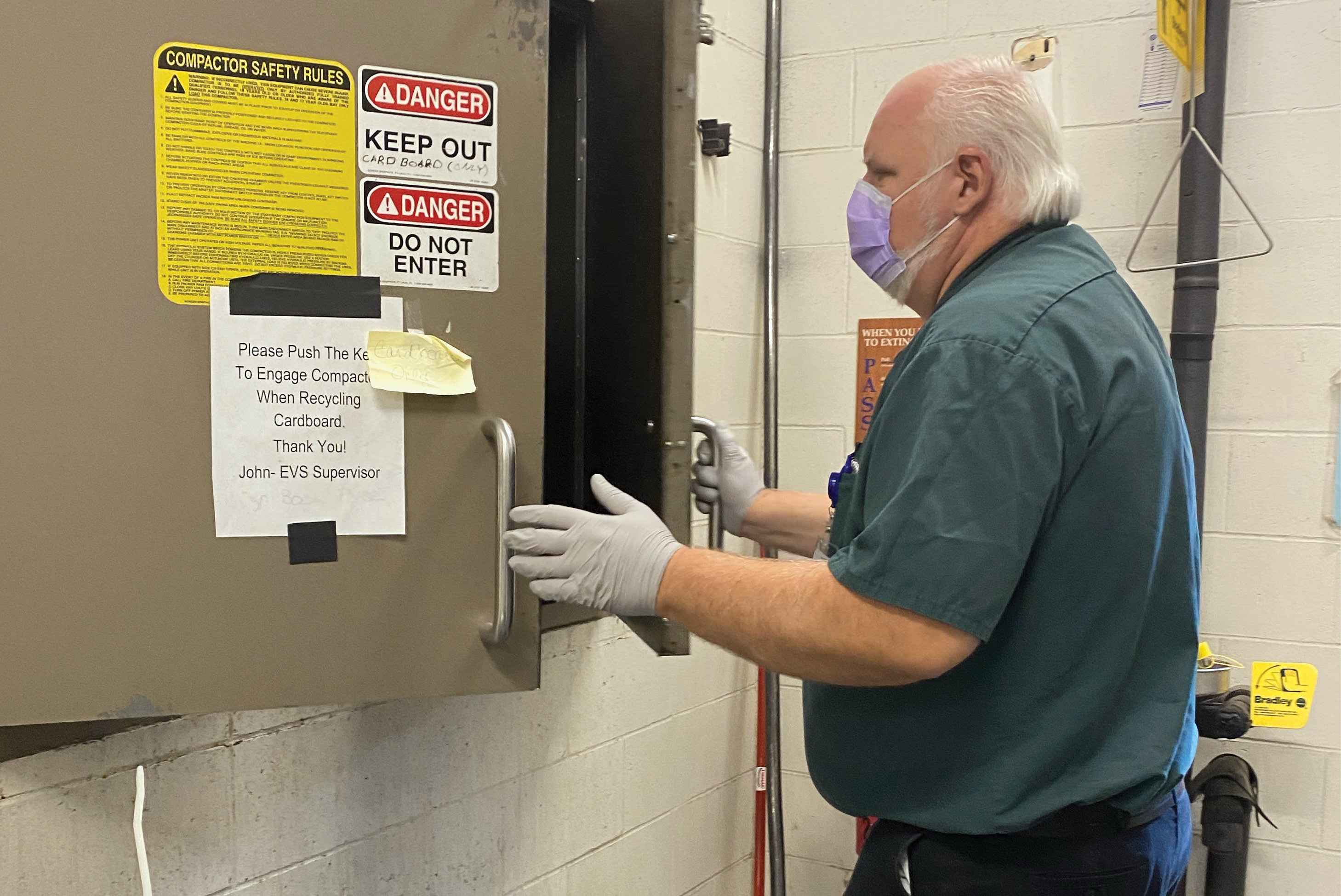Mayo Clinic's focus on staff needs, training and efficiency pays off

FROM LEFT: Anthony Swichtenberg, MS, CMIP, T-CSCT, regional manager of environmental services; John Newman, CMIP, T-CSCT, T-CHEST, environmental services supervisor; and Robbyn McGary, CHESP, T-CHEST, CMIP, regional director of environmental services.
Staffing shortages, hiring slowdowns and small candidate pools were a challenge for many health care organizations last year, and Mayo Clinic Health System, Northwest Wisconsin Region, in Eau Claire, Wis., was no exception. But thanks to effective approaches, its environmental services (EVS) department overcame these and other difficulties, culminating in it receiving the 2022 Association for the Health Care Environment’s (AHE’s) EVS Department of the Year Award in the 250-to-499 bed category.
For starters, the department created a new training and development coordinator position to better meet the needs of new and current employees, while three front-line staff were promoted to leadership roles, and two front-line staff transitioned directly to supervisor and assistant supervisor roles. Also, new employee orientation grew from a two-day program to five days. And current staffers now receive up-to-date training and development information in monthly newsletters, just-in-time communications and one-on-one on-demand training opportunities.
“Staff shortages have affected environmental services along with other areas of health care,” says Robbyn McGary, CHESP, T-CHEST, CMIP, regional director of EVS. “Hence, cross-training was prioritized to ensure all staff knew how to work in critical areas and clean inpatient rooms upon patient discharge or transfer. Cross-training is difficult when there isn’t enough staff, but our supervisors jumped in regularly to help with cleaning responsibilities and free up the resources necessary.”
What’s more, McGary’s team now meets weekly to “load level” schedules, making them more dynamic by posting them only a few weeks in advance (versus up to 12 weeks ahead of time) to allow flexibility in adjusting shifts without reducing staff satisfaction. Any adjustments made are based on seniority. In addition, EVS has navigated staffing challenges by onboarding float staff, who are scheduled at any of Mayo’s five Wisconsin facilities based on staffing needs. Occasionally, this includes working at multiple sites in a single day to fill coverage gaps.

Stacy Adams-Whaley, CHESP, T-CHEST, T-CSCT, CMIP, CHEST, T-CNACC, training and development coordinator, conducts an environmental services training session.
Parsing the data
The EVS team measures its achievements in several ways. For example, it developed a staff refresher training course to ensure consistency of practice, which includes assessments that help gauge the knowledge gained from a baseline date. It closely monitors the quality of cleaning practices and observes improved audit scores upon assignment or completion of the refresher course, too. Other quantifiable data are also monitored carefully.
“Employee turnover has remained stable, but work-related injuries have declined. We have also seen a decline in standardized infection ratios for health care-associated infections and an overall improvement in Hospital Consumer Assessment of Healthcare Providers and Systems courtesy and cleanliness scores compared to previous years,” notes Anthony Swichtenberg, MS, CMIP, T-CSCT, regional manager of EVS.

Shirley Jacobson, environmental services technician, empties trash in the surgery center.
Additionally, the hospital reinstated its “toss-a-bag” program, which encourages staff to be eco-friendly and take personal responsibility for waste generated in their work areas. This program reduced the cleaning frequency of 900 offices and workstations from daily to monthly by asking staff to self-empty their individual waste containers and recyclables before they leave for the day — saving EVS staff 2,700 collective minutes daily.
ATP testing reboot
Like many other programs, EVS rebuilt its adenosine triphosphate (ATP) testing protocol in recent years. Previously, surfaces were randomly tested using ATP swabs. The new protocol, however, is based on Centers for Disease Control and Prevention guidance and involves testing multiple surfaces in a percentage of patient rooms along with chemotherapy areas, the emergency department and surgical areas.
“Our department also uses ATP testing to monitor staff performance. A handheld device uploads results directly to a database, allowing us to complete audits faster and more accurately than other data collection methods, more easily identify areas for improvement, and track progress,” McGary says. “This process holds staff accountable for their cleaning practices and keeps them focused on the importance of a safe and clean environment for patients. Since implementing the program, room cleanliness has improved.”

Environmental services staff at Mayo Clinic Health System, Northwest Wisconsin Region, commemorates its winning of the Association for the Health Care Environment’s EVS Department of the Year Award.
To ensure consistency of practice, EVS rolled out a refresher training course for existing staff, which includes three learning modules. As proof of its success, ATP testing scores rose dramatically and the modules contributed to reductions in health care-associated infections and overall improved patient outcomes.
The EVS department recently began collaborating with Mayo Clinic’s recycling center in Rochester, Minn., as well, to recycle materials difficult to recycle locally. “For instance, we send several hundred pounds of plastic film to Rochester each month on vehicles already en route to the facility. The arrangement has not only helped us improve our landfill diversion rate but has also almost eliminated the disposal costs of these materials,” explains Swichtenberg.
John Newman, CMIP, T-CSCT, T-CHEST, EVS supervisor, says the department does everything possible to make the environment of care at Mayo Clinic Health System comforting and inviting.
“Cleanliness that patients and guests can see is a huge factor in achieving that goal,” Newman says. “When cleaning a room or area, we are thinking, ‘Is this a place I would want my family member to be? Is it clean enough for them? Is it safe for them? Does it exude peace and comfort instead of stress and anxiety?’”
Taking a bow
Being lauded by AHE for these actions is an immeasurable triumph.

Kenneth Weltzin, environmental services technician and trash porter, uses the compactor.
“Our team sacrifices themselves daily to do the dirty work. Being recognized at a national level is a huge boost to their morale and confidence,” Newman says. “The team takes great pride in their knowledge and understanding of the cleaning and disinfection of the facility. To receive this award is a great honor for them.”
McGary adds that it’s been a tough couple of years for EVS staff. “And we needed a win to keep the team motivated. I could not be prouder of the work they do every day.”




